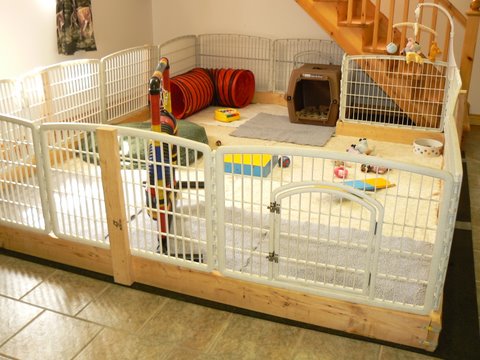Newborn Puppies Moving All Around Whelping Box

How sad this (obvious pregnancy which lasted for 63 days) was not planned out and controlled, and the female provided a whelping spot and encouraged or made to nest in a whelping box or child's plastic swim-pool bottom. The IDEA that you do not even know how to handle the puppies, is ALARMING!! (Speak to your vet, ASAP).
Newborn puppies moving all around whelping box. ANSWER: If your newborn puppy is crying a lot, it may be a sign of the lack of warmth she is feeling. As a general rule of thumb, consider that overly warm pups spread out around the whelping box while overly chilled pups will huddle and cry. Provide a Whelping Box. Prior to the birth of the puppies, you will need to provide a small enclosed space in which the mother can take care of her pups; this is known as a whelping box. This box needs to have plenty of space for both the mother and her puppies to lie down, with some space to spare so that mom can stretch out easily without. Keeping the Puppies Warm. Newborn puppies cannot regulate their temperatures on their own. This makes the temperature of the whelping box very important. Ideally, your box should be approximately 30°C throughout the first week. In the second week, the temperature can drop to 28°C. By the third week, it can drop to 27°C. Choose a box that is a comfortable size for your dog. A whelping box is one in which the dog gives birth. It should also keep the puppies warm and protect them from being squashed if their mother lies on them. The box should have 4 sides and a base.
Oct 9, 2014 - Explore Amber Booth's board "Newborn puppies", followed by 110 people on Pinterest. See more ideas about Newborn puppies, Whelping box, Puppies. On the other hand, it’s also worthy evaluating if the puppy is too hot. As a general rule of thumb, consider that overly warm pups spread out around the whelping box while overly chilled pups will huddle and cry. Puppy Needs to Eliminate. When puppies are in their mother’s care, mother dog licks their bottom to stimulate them to eliminate. The greatest danger to newborn puppies is getting chilled. Puppies cannot regulate their body temperature for the first two weeks of life and can die if they are not kept warm. If you need to separate them from the mother dog to move them, they can chill quickly, so moving them must be done with care. (Whelping Box pad being changed, pups in a bin) Always bring a flashlight and a hand towel, as never fails they have a puppy outside. In the whelping room I also have a "boot tray" on which I have a bucket of fresh water and dry kibble for mom.
Newborn puppies are able to maintain a body temperature about 12°F warmer than the air temperature. The temperature under the heat lamp in the whelping box should be around 85°F for the first 2-3 days, and then can be dropped to 75-80°F depending on the surrounding temperature. Anyhow, if it was me, and I Had this happen.. I would consider moving the whelping box to a whole different room.. And telling her how safe and better things would be, make them all comfy and warm and I would NOT keep the door closed and I would not allow anyone else to come by and see the puppies.. Mar 29, 2016 - Explore Allison Gafford's board "puppies!", followed by 118 people on Pinterest. See more ideas about Puppies, Whelping puppies, Whelping box. Heating the area over the whelping box with the aid of a heat lamp is usually all that is necessary. The larger the litter the lower the environmental temperature needs to be, since the puppies will huddle together and keep each other warm.
How Warm Should Newborn Puppies Be. Infant little dogs can keep up a body temperature about 12°F hotter than the air temperature. The temperature under the warmth light in the whelping box ought to be around 85°F for the initial 2-3 days, and after that can be dropped to 75-80°F relying upon the encompassing temperature. Temperature. Newborn puppies are able to maintain a body temperature about 12°F warmer than the air temperature. The temperature under the heat lamp in the whelping box should be around 85°F for the first 2-3 days, and then can be dropped to 75-80°F depending on the surrounding temperature. After giving birth to her puppies, you might expect your dog to act as she normally does. It's common, however, for a mother dog's behavior after giving birth to change a bit. Luckily, these changes are only temporary. As her puppies grow, the new mom's behavior will get back to normal. The standard puppies are weighed on a regular digital scale and should gain an ounce a day at first and then up to 3-4 ounces daily, whereas miniature puppies gain in a tenth of an ounce to start with and then an ounce or two a day. Jenny with litter at birth in 4' x 4' whelping box with lots of absorbent padding.



















